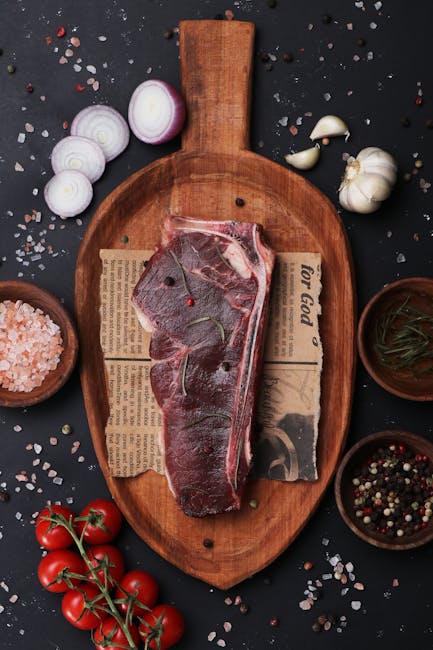How Old Are Salt and Pepper? A Deep Dive into the History of These Culinary Staples
Salt and pepper. Two seemingly simple ingredients that grace nearly every table across the globe. But have you ever wondered about their history? How old are these ubiquitous seasonings, and what journeys have they undertaken to reach our dinner plates? The answer, as with most historical inquiries, is far more complex and fascinating than you might initially imagine.

The Ancient History of Salt: More Than Just a Seasoning
Salt’s history stretches back millennia, far beyond the recorded history of humanity. Its importance is deeply intertwined with the very survival of civilizations. Long before it became a seasoning, salt was crucial for preserving food, a vital function in a world without refrigeration. This preservation ability made it an incredibly valuable commodity, impacting trade routes, wars, and the very structure of societies.
Evidence suggests salt harvesting and utilization date back to prehistory. Archaeological finds reveal salt’s presence in ancient settlements, indicating its importance in early human diets and preservation techniques. Salt’s use in ancient Egypt is well-documented, with evidence showing its use in mummification processes as well as seasoning food. The Dead Sea, known for its high salt concentration, has been a source of salt for thousands of years, highlighting its significance in the region’s history.

In ancient Rome, salt was so vital that soldiers were often paid in salt – a practice that gave rise to the word “salary.” The Roman Empire’s extensive road network was partly built to facilitate the transport of salt, demonstrating its economic and political importance. This underscores how deeply ingrained salt was in the fabric of Roman society.
Salt’s Global Impact
Salt’s influence extends beyond its culinary applications. Its use in various industries, including the manufacture of chemicals, pharmaceuticals, and even textiles, solidified its position as a crucial resource throughout history. The strategic importance of salt-producing regions shaped geopolitical landscapes and trade networks for centuries.
Different cultures developed unique methods for salt production and utilization. From the vast salt pans of India to the ancient salt mines of Europe, the extraction and trade of salt have shaped local economies and traditions across the globe. These distinct methods and traditions are a testament to salt’s enduring significance throughout human history.
Pepper’s Long and Spicy Journey
While salt’s story is one of survival and necessity, pepper’s tale is more intertwined with luxury, trade, and exploration. Unlike salt, pepper’s history isn’t as easily traced back to prehistory, although its use dates back to ancient times. The discovery and use of pepper significantly impacted trade routes and cultural exchanges across continents.
Ancient civilizations prized pepper for its flavor and its preserving qualities. It wasn’t just a spice; it was a highly sought-after commodity, often used as a form of currency or a valuable gift. Its scarcity and high value drove extensive trade networks across continents, connecting distant cultures and civilizations.
The spice trade, which centered around pepper, played a pivotal role in the exploration and colonization of new lands. European explorers embarked on perilous voyages to reach the spice-producing regions of Asia, fueling global exploration and ultimately shaping the world as we know it today.

Pepper’s Varied Origins and Types
Black pepper, white pepper, green pepper, and pink peppercorns all contribute to the rich history and culinary versatility of this spice. While the exact origins of each type may vary slightly, they all played a crucial role in the spice trade and have enriched cuisines worldwide.
The development of different pepper cultivation methods and the exploration of new pepper varieties highlight the ongoing human interaction with this important spice. The diversity of peppercorns adds another layer of complexity to its rich history.
Salt and Pepper: A Culinary Partnership Through Time
While salt and pepper have distinct histories, their combined use is a testament to their complementary nature. The interplay between salty and peppery flavors enhances the taste of countless dishes across diverse cultures. This synergistic relationship reflects the evolution of culinary practices and the enduring appeal of these fundamental seasonings.
From ancient civilizations to modern kitchens, salt and pepper continue to hold a pivotal place in our culinary traditions. Their stories are intricately interwoven with the history of human civilization, highlighting their importance as essential food preservatives, flavorful seasonings, and valuable trade commodities. Understanding the histories of these two seemingly simple ingredients provides a window into the broader history of human civilization, highlighting the ingenuity, resourcefulness, and cultural exchange that have shaped our world.
- Salt’s ancient role in preservation and its influence on early societies.
- The significance of the spice trade and its impact on global exploration.
- The diverse types of pepper and their unique contributions to cuisine.
- The lasting culinary partnership between salt and pepper.
- The ongoing relevance of these fundamental seasonings in modern gastronomy.

